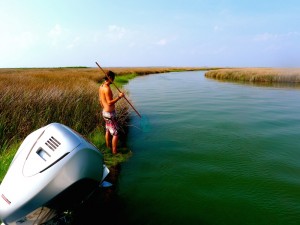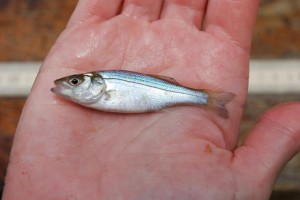fisheries
 I hang with a lot of fisheries guys. If I had to guess at the backgrounds of the people I’ve fished with most frequently, it would be (in order) coaching baseball, cutting meat, and studying fish. My brother is a fisheries biologist as are many of my friends. I was thrilled recently when a young fisherman who is still in high school reached out to me about his career plans, “I want to be a fish scientist,” he said. “I want to make a difference.” Obviously, I appreciate those guys and the science in which they work.
I hang with a lot of fisheries guys. If I had to guess at the backgrounds of the people I’ve fished with most frequently, it would be (in order) coaching baseball, cutting meat, and studying fish. My brother is a fisheries biologist as are many of my friends. I was thrilled recently when a young fisherman who is still in high school reached out to me about his career plans, “I want to be a fish scientist,” he said. “I want to make a difference.” Obviously, I appreciate those guys and the science in which they work.
I looked up the term Fisheries Management and found this: Fisheries management draws on fisheries science in order to find ways to protect fishery resources.
I like the phrase, “draws on fisheries science.” As a fisherman and a conservationist, I want management decisions based on facts, not politics, pseudoscience, or hearsay. I am a student of the collective knowledge acquired by fishermen. There’s nothing I’d rather hear than the recommendations of a seasoned angler or the sage advice of an experienced waterman. On the other hand, I work in a scientific profession, so I recognize that good science trumps folklore on every occasion. Read More!
 “Let’s kill as many as we can before we have to save them.” That seems to be the attitude of the Maryland Department of Natural Resources. Tuesday, just before closing for a five day Thanksgiving weekend, DNR fisheries dropped a turkey on recreational striped bass anglers by announcing a 14% increase in harvest in the Chesapeake Bay. At a time when striper stocks are steeply declining and states up and down the Atlantic seaboard face impending cuts mandated by the Atlantic States Marine Fisheries Commission (ASMFC), Maryland & Virginia are grabbing more fish. Here’s a link to the press release and a quote:
“Let’s kill as many as we can before we have to save them.” That seems to be the attitude of the Maryland Department of Natural Resources. Tuesday, just before closing for a five day Thanksgiving weekend, DNR fisheries dropped a turkey on recreational striped bass anglers by announcing a 14% increase in harvest in the Chesapeake Bay. At a time when striper stocks are steeply declining and states up and down the Atlantic seaboard face impending cuts mandated by the Atlantic States Marine Fisheries Commission (ASMFC), Maryland & Virginia are grabbing more fish. Here’s a link to the press release and a quote:
Determination of the Available 2014 Chesapeake Bay Commercial Striped Bass Quota
For 2014, it was decided that fishermen could safely harvest 8,652,528 pounds of Striped Bass – without detriment to the Bay population. The previous year’s quota was 7,589,937 pounds and for the first time in many years the quota has been increased in the Bay. This increase of approximately 14% is attributed to a large number of fish from the 2011 year class (fish that hatch and enter into the population in a given year) which are just now reaching the legal minimum size of 18 inches.
I hope you find that as unbelievable as I do. I’ve tried to keep fisheries politics out of this blog lately because I want to concentrate on the fun parts of our sport, but when something this egregious comes out, I think it’s important to spread the news and let our fisheries managers know just how pissed off recreational anglers can be. Read More!


